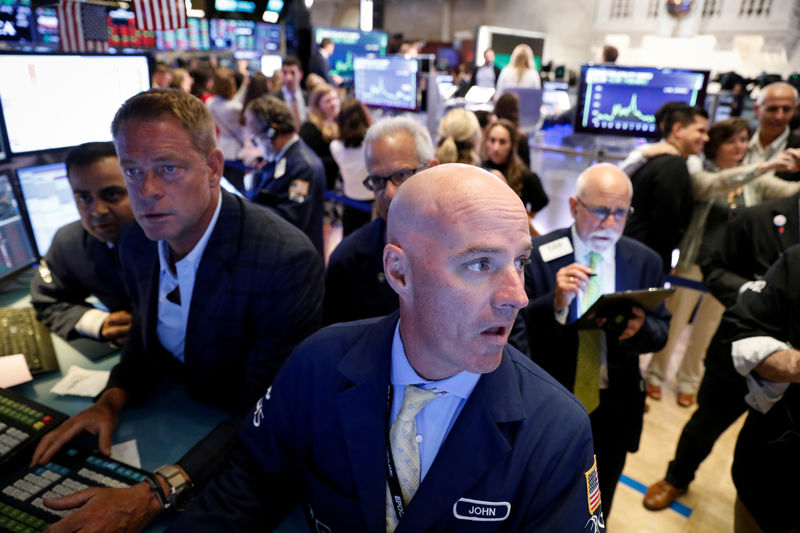By Stephen Culp
NEW YORK (Reuters) - Wall Street fell again on Thursday, abruptly reversing early gains after U.S. President Donald Trump put concerns about the U.S.-China trade war back in the spotlight, tweeting that he would impose an additional 10% tariff on $300 billion in Chinese imports.
Having spent most of the session on track for their best day since June, all three major U.S. stock indices took sudden U-turns as investors quickly turned into sellers after the tweet.
The bond market rallied on Trump's comment, prompting U.S. Treasury yields into their steepest drop in over a year. The benchmark 10-year yield fell to its lowest level since November 2016.
The CBOE Volatility Index, a gauge of investor anxiety, shot to its highest reading since June 4.
"The biggest issue for investors to realize is that this is systemic and is going to be an ongoing issue between the U.S. and China," said Joseph Quinlan, head of chief investment office market strategy for Merrill and Bank of America (NYSE:BAC) Private Bank in New York.
"The markets don't like uncertainty and this is a bolt from the blue in terms of uncertainty."
The sell-off comes on the heels of the U.S. Federal Reserve's first interest rate cut in a decade, and remarks from Fed chief Jerome Powell that tempered expectations for further cuts this year, cuts Trump has been vocal about supporting.
"It looks like the president is bullying the chairman of the Federal Reserve in order to wage his trade war," said Michael O'Rourke, chief market strategist at Jonestrading in Greenwich, Connecticut. "The market should not appreciate that."
Earlier in the session, Wall Street got a boost from a string of positive earnings from a wide range of companies, including General Motors Co (NYSE:GM), Kellogg Co, Verizon Communications Inc (NYSE:VZ) and Yum Brands Inc, among others.
In economic news, the U.S. manufacturing sector expanded in July at its slowest pace in almost three years, according to the Institute for Supply Management's purchasing manager index (PMI).
Investors now look to Friday's release of the Labor Department's closely-watched jobs report.
The Dow Jones Industrial Average fell 280.85 points, or 1.05%, to 26,583.42, the S&P 500 lost 26.82 points, or 0.90%, to 2,953.56 and the Nasdaq Composite dropped 64.30 points, or 0.79%, to 8,111.12.
Of the 11 major sectors in the S&P 500, eight closed in negative territory, with financials, energy and trade-sensitive industrials seeing the biggest percentage losses.
Second-quarter earnings season continues at full throttle, with 355 of S&P 500 companies having reported. Of those, 74.4% have bested Street estimates, according to Refinitiv data.
Analysts now see S&P 500 earnings growth of 2.5%, up from just 0.3% a month ago, per Refinitiv.
Pick-up trucks and SUVs drove General Motors' second-quarter profit beat, but the automaker's stock turned negative after the Trump tweet, ending the session down 0.5%.
Kellogg surged 9.3% as higher North American demand helped the packaged food company beat second-quarter estimates.
Shares of Yum Brands Inc jumped 3.9% after beating analyst profit and sales expectations on better-than-expected growth at all its restaurant chains, which include Taco Bell and Pizza Hut.
Declining issues outnumbered advancing ones on the NYSE by a 1.87-to-1 ratio; on Nasdaq, a 2.23-to-1 ratio favored decliners.
The S&P 500 posted 28 new 52-week highs and 11 new lows; the Nasdaq Composite recorded 76 new highs and 136 new lows.

Volume on U.S. exchanges was 9.89 billion shares, compared with the 6.48 billion average over the last 20 trading days.